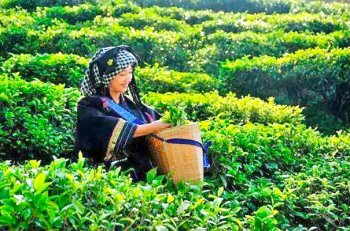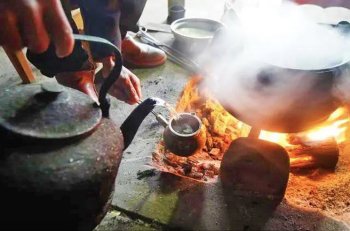Core Joint Research Project “Comprehensive History of Everyday Life” “Nichijo-Sahan (nothing out of the ordinary)”: What Japanese people have historically been eating
Geographical scope
Japan and elsewhere in East Asia
Purpose
-
 The Tea-picking Women of Dianxi Yi Nationality in Yunnan Province, China
The Tea-picking Women of Dianxi Yi Nationality in Yunnan Province, China
-
 Making “Taihua-cha Tea” (Lushi Town, Lincang, Yunnan Province) /Photograph: Yang Rui
Making “Taihua-cha Tea” (Lushi Town, Lincang, Yunnan Province) /Photograph: Yang Rui
-
 Presentation by Eiji Niawa, 4th Open Meeting (October 2022)
Presentation by Eiji Niawa, 4th Open Meeting (October 2022)
-
 5th Open Workshop (November 2023)
5th Open Workshop (November 2023)
"Washoku" (Japanese dietary cultures) has been inscribed on the UNESCO Intangible Cultural Heritage list. But what exactly defines Japanese cuisine? This is challenging to answer, given Japan's diverse regional cuisines. To clarify the relationship between Japanese food and the dietary habits of everyday people in Japan, this study explores what Japanese people have traditionally consumed and evaluates the cultural significance of Japanese food from an international perspective.
Food, along with clothing and shelter, forms a foundational part of daily life across all regions and eras. As the dietary habits of the Japanese have become increasingly diverse, this study revisits traditional assumptions, considering not only ingredients but also the broader food culture, including cooking techniques, seasonings, foreign-influenced dishes, dining etiquette, and tableware. These elements, often seen as unremarkable or routine, are examined as integral representations of Japanese culinary heritage. The study also examines "tastes and preferences" for tea, alcoholic beverages, and other elements of non-daily food culture. Topics explored by participants include “The Reconsideration of Rice Culture/Diversity of Mochi,” “Physical Culture/Mingu (Folk Implements) for Food,” “The Comparative Culture of Food,” “Daily/Non-Daily Food Culture,” “Food Culture in the Time of Glocalization,” and "What is Local Cuisine?"
Duration: 2020-
*In 2021, the name was changed from “Nichijo-Sahan (nothing out of the ordinary): What Japanese people have historically been eating (foundational research)” to “Nichijo-Sahan (nothing out of the ordinary): What Japanese people have historically been eating.”


